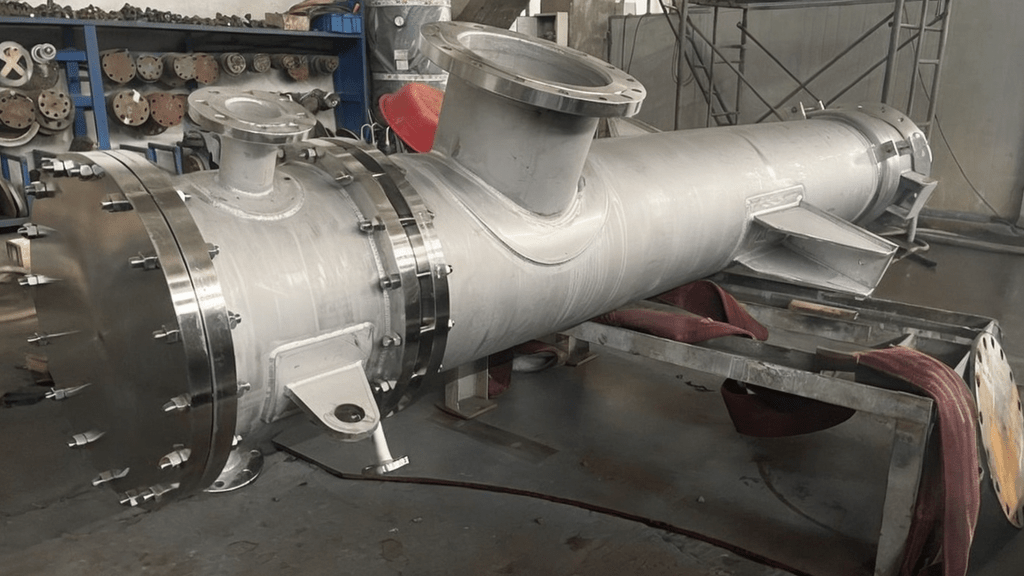Effect of Ambient Temperature on Air-Cooled Oil Coolers
Ambient (surrounding) air temperature significantly impacts the cooling efficiency, oil temperature stability, and overall performance of air-cooled oil coolers. Below is a detailed breakdown of its effects:
1. Cooling Efficiency & Heat Dissipation
◉ In Cool/Moderate Ambient Temperatures (10°C – 30°C / 50°F – 86°F)
- Optimal performance – Air-cooled oil coolers work efficiently.
- Effective heat transfer – The temperature difference between hot oil and ambient air is large, allowing better cooling.
- No need for auxiliary fans in most cases (natural airflow suffices).
◉ In High Ambient Temperatures (Above 35°C / 95°F)
- Reduced cooling capacity – Hotter air absorbs less heat from the oil.
- Risk of oil overheating – If airflow is insufficient, oil temps may exceed safe limits.
- Solutions:
- Increase airflow (add an electric fan).
- Use a larger cooler (more fins/tubes for better dissipation).
- Relocate cooler to a better-ventilated area.
◉ In Very Cold Ambient Temperatures (Below 0°C / 32°F)
- Oil overcooling risk – Oil may stay too thick, reducing lubrication efficiency.
- Slower warm-up – Engine takes longer to reach optimal operating temperature.
- Solutions:
- Use a thermal bypass valve (allows oil to skip the cooler when cold).
- Partially block airflow (manually or with a thermostat-controlled shutter).
2. Impact on Oil Viscosity & Engine Performance
| Ambient Temp | Effect on Oil | Potential Issues | Solutions |
| Very Cold (< 0°C / 32°F) | Oil thickens (higher viscosity) | Poor circulation, increased engine wear | Use thinner oil (e.g., 5W-30 instead of 10W-40) |
| Moderate (10°C – 30°C / 50°F – 86°F) | Optimal viscosity | None | Standard cooling setup works well |
| Very Hot (> 35°C / 95°F) | Oil thins (lower viscosity) | Reduced lubrication, higher engine wear | Use thicker oil (e.g., 10W-40 or 20W-50) |
3. Effect on Different Applications
◉ Automotive (Cars, Trucks, Motorcycles)
- Hot climates → Oil may overheat, requiring a larger cooler or fan.
- Cold climates → May need a bypass valve to prevent overcooling.
◉ Industrial & Heavy Machinery
- Dusty environments → Clogged fins reduce efficiency (regular cleaning needed).
- High-load operations → If ambient temps are high, liquid cooling may be better.
◉ Aviation & Marine
- High altitudes (thin air) → Reduced cooling efficiency (may need larger surface area).
- Saltwater exposure → Aluminum coolers may corrode (stainless steel preferred).
4. Mitigation Strategies for Extreme Ambient Temperatures
| Issue | Solution |
| High Ambient Temp → Poor Cooling | – Add a cooling fan – Increase cooler size – Improve airflow (ducting) |
| Low Ambient Temp → Overcooling | – Install a thermostat-controlled bypass – Use a louvered cover to restrict airflow |
| Dust/Debris Clogging Fins | – Install a mesh pre-filter – Regular cleaning |
5. When to Consider Liquid Cooling Instead?
If ambient temperatures are consistently extreme (below freezing or above 40°C / 104°F), a water-cooled oil cooler may be better because:
◉ More stable oil temperatures.
◉ Less dependent on ambient air conditions.
Final Summary
- Best for moderate climates (10°C – 30°C / 50°F – 86°F).
- Requires adjustments in extreme heat or cold (fans, bypass valves, oil grade changes).
- Not ideal for applications with strict temperature control needs (e.g., high-performance racing).
